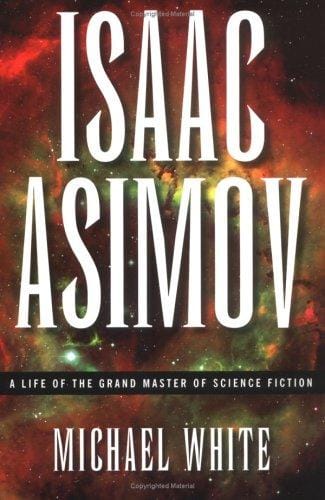Annihilation: Exploring Jeff VanderMeer’s Luminous Descent Into The Unknown
Dive into Annihilation’s eerie world, unpack its plot, themes, and film adaptation in one comprehensive, spoiler-light guide.

Introduction
Annihilation stands at the crossroads of science fiction, horror, and ecological fable. Jeff VanderMeer’s 2014 novel—book one of the Southern Reach Trilogy—and the 2018 Alex Garland film adaptation plunge audiences into Area X, a quarantined coastal wilderness where biology has gone feral and the laws of nature crack like glass. This article provides an accessible yet deep guide to Annihilation, helping newcomers and long-time fans parse its mysteries, symbolism, and ongoing cultural relevance.
What Is Annihilation?
Plot Snapshot
At the center of Annihilation is the twelfth expedition mounted by the clandestine Southern Reach agency. Four women, identified only by their professions — biologist, psychologist, anthropologist, surveyor — cross the invisible border into Area X. What they find is a riot of mutation: albino alligators with concentric teeth, spores that write on walls, and a subterranean tunnel that breathes. The environment resists measurement, memories slip, and the expedition quickly unravels under the weight of external terror and internal secrets.
Main Characters
The Biologist, our taciturn narrator, searches for meaning after losing her husband to the previous expedition. Her scientific detachment, however, dissolves as she inhales bioluminescent spores and begins to change. The Psychologist, nominally the leader, wields hypnotic trigger words to control the team, raising ethical questions about consent. The Surveyor and Anthropologist embody caution and curiosity respectively, yet both illustrate how Area X amplifies latent fears rather than imposing new ones.
Although they lack conventional names, these characters feel uncannily real because VanderMeer frames them as lenses rather than fixed personalities. Their anonymity universalizes their anxieties: the Biologist’s need for isolation, the Psychologist’s obsession with authority, and the Surveyor’s aggression mirror traits readers recognize in themselves. As each figure erodes, the novel asks whether identity is defined by memory, vocation, or something more porous — an especially potent question once the environment itself begins rewriting their genomes.
Major Themes
Ecological Transformation
VanderMeer coined the term 'ecological horror' to describe Annihilation, and the label fits. Area X is not a standard monster but an ecosystem reclaiming agency. The rampant hybridization of species dramatizes climate-change anxiety, showing nature as both beautiful and indifferent to human survival. Unlike apocalyptic fiction that focuses on destruction, Annihilation envisions creation run amok — a blooming unknown that renders human categories obsolete. This inversion forces readers to confront their assumption that Earth exists for our interpretation.
Identity & Self-Destruction
Running parallel to the ecological thread is a meditation on self-annihilation. Every expedition member carries a private impulse to dissolve: the Biologist flees intimacy, the Psychologist hides behind protocols, and earlier teams succumbed to suicide or cancer. Garland’s film makes the theme explicit by having characters voice the idea that 'self-destruction is fundamental to human nature'. Area X functions as catalyst, not cause, magnifying the psychological cracks already present. The result is a narrative as introspective as it is cosmic.
From Page to Screen: The 2018 Film
Alex Garland’s 2018 adaptation takes bold liberties while honoring the book’s dreamlike dread. Natalie Portman plays Lena, a renamed Biologist given a fuller backstory as a cellular researcher and unfaithful spouse. Garland condenses the expedition to five specialists and introduces jaw-dropping set pieces — the bear that screams with a human voice, the prismatic lighthouse climax — that visualise the uncanny in ways prose can only hint. The film also shifts the chronology, nesting flashbacks and video logs to keep mainstream audiences grounded without sacrificing ambiguity.
Notably, the movie frames Area X — renamed 'the Shimmer' — as an alien refraction instead of a terrestrial anomaly. This tweak allows for dazzling kaleidoscopic visuals and a more explicit commentary on cancer and cellular division. While some readers lament the changes, the film’s divergent third act preserves the story’s central question: can transformation be embraced rather than feared? In doing so, Garland creates a companion piece rather than a replacement, inviting viewers to experience Annihilation through a different sensory lens.
Why Annihilation Still Matters
Nearly a decade after publication, Annihilation’s influence permeates podcasts, design trends, and scholarly conferences. Its hybrid genre anticipates a media landscape where boundaries blur, while its environmental subtext feels increasingly prophetic amid record heat waves and biodiversity loss. Gamers cite its atmosphere in titles like Subnautica and Control; biologists use it to spark discussions about invasive species; and literature courses pair it with classics like H. P. Lovecraft and Octavia E. Butler to dissect how the unknown shapes cultural anxiety.
Crucially, the story offers neither cynicism nor easy hope. Area X is terrifying precisely because it is indifferent, yet within that indifference lies possibility. Readers and viewers emerge questioning whether humanity’s dissolution could coexist with a richer, wilder planet. By framing annihilation as transformation rather than obliteration, the narrative encourages a conceptual shift from domination to coexistence — an outlook at the heart of modern sustainability movements and post-human philosophy.
Final Thoughts
Annihilation endures because it speaks to primal fears while expanding the vocabulary of speculative fiction. Whether you open VanderMeer’s novel for the first time or rewatch Garland’s dazzling film, you will find new meanings glimmering in the dark, mutating with each revisit — just like Area X itself. Step across the border, but remember: what you discover may ultimately be yourself.



